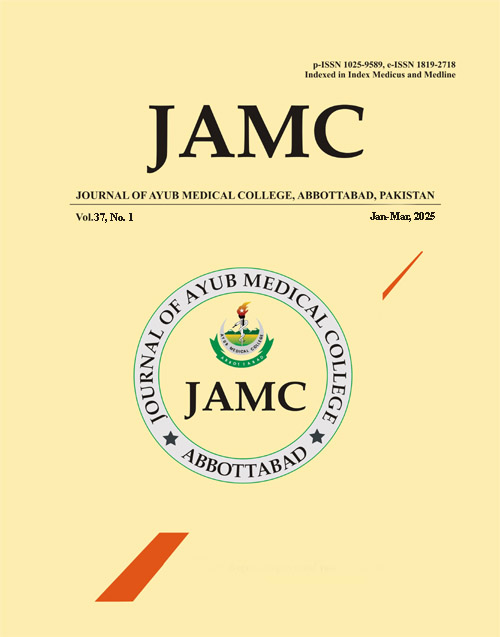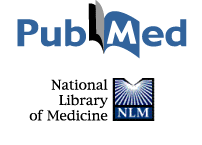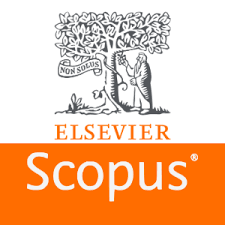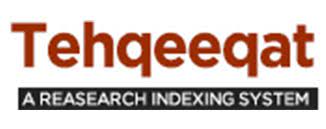EFFECT OF AWARENESS ON KNOWLEDGE OF NON-ALCOHOLIC FATTY LIVER DISEASE AMONG NON-GI PHYSICIANS
DOI:
https://doi.org/10.55519/JAMC-02-14183Keywords:
Awareness, Liver, Non-alcoholic fatty liver disease, PrevalenceAbstract
Objective:
To measure the base line level of knowledge among non-gastroenterology physicians and compare knowledge after sharing of reading material about NAFLD upon reassessment.
Study design: Quasi-experimental.
Place and duration of study: POF Hospital Wah Cantt
Methodology: Proforma containing various NAFLD related questions covering three domains including risk factors, diagnostics and treatment were included. The Proformas were handed over to all participants involved in the study. The first part of the questionnaire comprised demographic information of the participants. The second part of the questionnaire was about the knowledge of the doctors regarding NAFLD. The questionnaire comprised of 12 questions including multiple choice questions & questions with yes or no with a total 25 parameters. The maximum achievable score was 25. The primary outcome was the frequency of distinct categories of score before and after creating awareness.
Results: Nine non-gastroenterology (22.5%) physicians had good knowledge, 17(42.5%) had fair knowledge and 12(30.0%) had poor knowledge. After the awareness campaign, 10(25.0%) participants had excellent knowledge, 9(22.0%) had very good knowledge, 18(45.0) had fair knowledge and only one participant (2.5%) had poor knowledge with p value less than 0.05.
Conclusion: We concluded that primary care physicians underestimate the frequency of NAFLD and fail to recognize its risk factors, diagnostics and treatment. The adequate use of awareness campaigns improved their knowledge effectively.
Keywords: Awareness, Liver, Non-alcoholic fatty liver disease (NAFLD), prevalence
References
1. Alemany-Pagès M, Moura-Ramos M, Araújo S, Macedo MP, Ribeiro RT, do Ó D, Ramalho-Santos J, Azul AM. Insights from qualitative research on NAFLD awareness with a cohort of T2DM patients: time to go public with insulin resistance?. BMC Public Health. 2020 Dec;20:1-4. https://doi.org/10.1186/s12889-020-09249-5
2. Yip TC, Vilar‐Gomez E, Petta S, Yilmaz Y, Wong GL, Adams LA, De Lédinghen V, Sookoian S, Wong VW. Geographical similarity and differences in the burden and genetic predisposition of NAFLD. Hepatology. 2023 Apr 1;77(4):1404-27. https://doi.org/10.1002/hep.32774
3. Younossi ZM, Golabi P, Paik JM, Henry A, Van Dongen C, Henry L. The global epidemiology of nonalcoholic fatty liver disease (NAFLD) and nonalcoholic steatohepatitis (NASH): a systematic review. Hepatology. 2023 Apr 1;77(4):1335-1347. https://doi.org/10.1097/HEP.0000000000000004.
4. Le P, Rothberg M, Gawrieh M, McCullough A, Noureddin M and Naim Alkhour et al
5. Nyberg LM, Cheetham TC, Patton HM, Yang SJ, Chiang KM, Caparosa SL, Stern JA, Nyberg AH. The Natural History of NAFLD, a Community-Based Study at a Large Health Care Delivery System in the United States. Hepatol Commun.2024;5(1):83-96. https://doi.org/doi: 10.1002/hep4.1625.
6. Alexander M, Loomis AK, Fairburn-Beech J, van der Lei J, Duarte-Salles T, Prieto-Alhambra D, Ansell D, Pasqua A, Lapi F, Rijnbeek P, Mosseveld M. Real-world data reveal a diagnostic gap in non-alcoholic fatty liver disease. BMC medicine. 2018;16(1):10-16. https://doi.org/10.1186/s12916-018-1103-x
7. Alqahtani SA, Paik JM, Biswas R, Arshad T, Henry L, Younossi ZM. Poor Awareness of Liver Disease Among Adults With NAFLD in the United States. Hepatol Commun. 2021;5(11):1833-1847. https://doi.org/10.1002/hep4.1765.
8. Patel, P.J., Banh, X., Horsfall, L.U., Hayward, K.L., Hossain, F., Johnson, T., Stuart, K.A., Brown, N.N., Saad, N., Clouston, A., Irvine, K.M., Russell, A.W., Valery, P.C., Williams, S. and Powell, E.E. (2018), Underappreciation of non-alcoholic fatty liver disease by primary care clinicians: limited awareness of surrogate markers of fibrosis. Intern Med J;48:144-151. https://doi.org/10.1111/imj.13667
9. Du Y, Ratnapradipa KL, Su D, Dong J, Rochling FA, Farazi PA. Effects of Interventions for Improving Awareness and Knowledge of Nonalcoholic Fatty Liver Disease Among Chinese Young Adults for Prevention of Liver Cancer—A Randomized Controlled Trial. Journal of Cancer Education. 2024 Jun;39(3):253-63. https://doi.org/10.1007/s13187-024-02404-1
10. Khan RT, Hussain SZ, Shahzad S, Majid Z, Naeem MU, Harjani R, Lail G, Khalid MA, Laeeq SM, Luck NH. Frequency of non-alcoholic fatty liver disease among the non-obese population presenting to the gastrointestinal outpatient clinic. J Liaquat Natl Hosp. 2024;2(1):8-13. DOI: https://doi.org/10.37184/jlnh.2959-1805.1.25
11. Abdulfattah AA, Elmakki EE, Maashi BI, Alfaifi BA, Almalki AS, Alhadi NA, Majrabi H, Kulaybi A, Salami A, Hakami FI. Awareness of Non-alcoholic Fatty Liver Disease and Its Determinants in Jazan, Saudi Arabia: A Cross-Sectional Study. Cureus. 2024 Jan;16(1 https://doi.org/10.7759/cureus.53111
12. Ghevariya V, Sandar N, Patel K, Ghevariya N, Shah R, Aron J, Anand S. Knowing What's Out There: Awareness of Non-Alcoholic Fatty Liver Disease. Front Med (Lausanne). 2014 Mar 24;1:4. https://doi.org/doi: 10.3389/fmed.2014.00004.
13. Alqahtani SA, Paik JM, Biswas R, Arshad T, Henry L, Younossi ZM. Poor awareness of liver disease among adults with NAFLD in the United States. Hepatology Communications. 2021 Nov;5(11):1833-47. https://doi.org/10.1002/hep4.1765
14. Mohamed R, Yip C, Singh S. Understanding the knowledge, awareness, and attitudes of the public towards liver diseases in Malaysia. European Journal of Gastroenterology & Hepatology. 2023 Jul 1;35(7):742-52. https://doi.org/10.1097/MEG.0000000000002548
15. Bergqvist CJ, Skoien R, Horsfall L, Clouston AD, Jonsson JR, Powell EE. Awareness and opinions of non‐alcoholic fatty liver disease by hospital specialists. Internal medicine journal. 2013 Mar;43(3):247-53
16. Wessels DH, Rosenberg Z. Awareness of non-alcoholic steatohepatitis and treatment guidelines: What are physicians telling us? World J Hepatol. 2021 Feb 27;13(2):233-241. https://doi.org/10.4254/wjh.v13.i2.233.
17. Polanco-Briceno, S., Glass, D., Stuntz, M. et al. Awareness of nonalcoholic steatohepatitis and associated practice patterns of primary care physicians and specialists..BMC Res. 2016 Notes;9:157 https://doi.org/10.1186/s13104-016-1946-1
18. Butt N, Khan MA, Rai L, Channa RH, Khemani H, Abbasi A. Perception of non-alcoholic fatty liver disease: real-life experience from Pakistan. Cureus. 2021 Jun;13(6). https://doi.org/10.7759/cureus.16029
Downloads
Published
How to Cite
Issue
Section
License
Copyright (c) 2025 Noreen Adil, Adil Mehraj, Mehwish Gilani, Ammad Akram

This work is licensed under a Creative Commons Attribution-NoDerivatives 4.0 International License.
Journal of Ayub Medical College, Abbottabad is an OPEN ACCESS JOURNAL which means that all content is FREELY available without charge to all users whether registered with the journal or not. The work published by J Ayub Med Coll Abbottabad is licensed and distributed under the creative commons License CC BY ND Attribution-NoDerivs. Material printed in this journal is OPEN to access, and are FREE for use in academic and research work with proper citation. J Ayub Med Coll Abbottabad accepts only original material for publication with the understanding that except for abstracts, no part of the data has been published or will be submitted for publication elsewhere before appearing in J Ayub Med Coll Abbottabad. The Editorial Board of J Ayub Med Coll Abbottabad makes every effort to ensure the accuracy and authenticity of material printed in J Ayub Med Coll Abbottabad. However, conclusions and statements expressed are views of the authors and do not reflect the opinion/policy of J Ayub Med Coll Abbottabad or the Editorial Board.
USERS are allowed to read, download, copy, distribute, print, search, or link to the full texts of the articles, or use them for any other lawful purpose, without asking prior permission from the publisher or the author. This is in accordance with the BOAI definition of open access.
AUTHORS retain the rights of free downloading/unlimited e-print of full text and sharing/disseminating the article without any restriction, by any means including twitter, scholarly collaboration networks such as ResearchGate, Academia.eu, and social media sites such as Twitter, LinkedIn, Google Scholar and any other professional or academic networking site.










